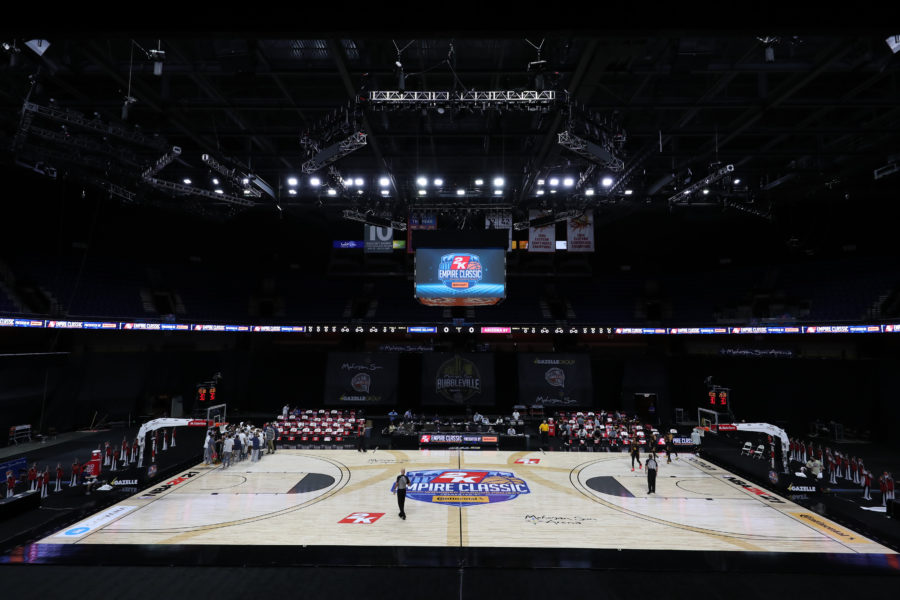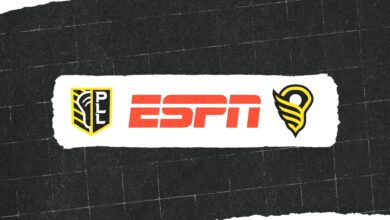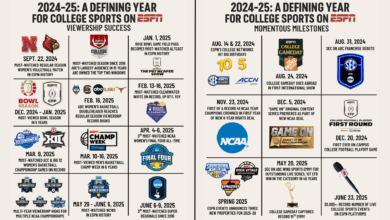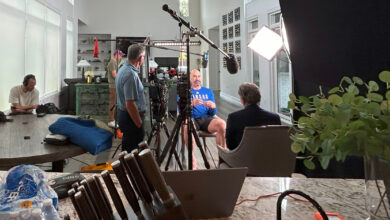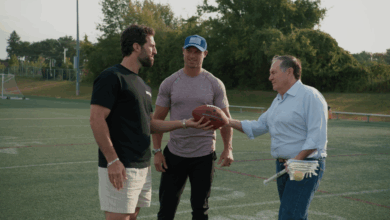As the men’s and women’s college basketball seasons have tipped off, key ESPN employees in programming and production spoke with Front Row about the approach and strategy for this unprecedented season.
From scheduling flexibility to game productions and calling games from home, here’s insight from ESPN Director of Programming and Acquisition, Dan Ochs; Vice President of Women’s Programming and Acquisitions, Carol Stiff, Vice President of Production, Michael Shiffman; senior coordinating producer David Ceisler and coordinating producer Pat Lowry.
Communication is key in our work with the conferences. Both sides are dealing with challenges not typically faced each season, so staying in constant contact makes decision-making and execution much easier.
– ESPN VP, Women’s Programming and Acquisitions, Carol Stiff
Scheduling has already proved to be a little challenging. What is your approach for this season?
Ochs: Patience and flexibility. In a typical year, our goal is to have the overall schedule finalized by Labor Day. This year, next week’s schedule is still a moving target.
Stiff: In addition to patience and flexibility, we have to be extremely dialed in to teams’ schedules and overall availability so that when changes need to happen, we can execute in as efficient a manner as possible.
This year’s theme will be flexibility. How are we working with our conference partners to ensure this?
Ochs: Our conference partners always provide us a great deal of flexibility – in both the construction and execution of the schedule. This year more than ever, that flexibility will need to be a two-way street as we work together to navigate the inevitable game cancellations and postponements.
Stiff: Communication is key in our work with the conferences. Both sides are dealing with challenges not typically faced each season, so staying in constant contact makes decision-making and execution much easier.
Will we still see franchise programming week to week?
Ochs: Yes. All our key franchises will return in January – Big Monday, Super Tuesday, Saturday Primetime. Despite all the uncertainty surrounding the season, and challenges to building the schedule, our strategy has remained consistent – to deliver the biggest matchups from the best teams in the country on our biggest nights.
Stiff: Yes, nothing has changed here. In addition to our weekly franchises (Big Monday and Thursday Showcase), we can also still look forward to the We Back Pat and Play for Kay initiatives, raising money for Alzheimer’s and Cancer Research, respectively.
ESPN is home to the NCAA Women’s Tournament. What expectations do we have for our coverage this year?
Stiff: We remain dedicated to the women’s game and very much look forward to crowning a champion next spring. Plans for an NCAAW bubble are in the very early stages, but we remain in close contact with the NCAA to ensure we are ready for all possibilities.
How will game productions look this season due to increased safety protocols and guidelines?
Lowry: We have worked with venues to find camera positions that follow our safety protocols and at the same time mesh with the building, especially if they are having fans at the games. In almost all cases, the viewer will see the normal “game” camera vantage as our main coverage camera. We will deploy unmanned cameras in several locations, including the basket stanchions, to keep us close to the action while maintaining social distancing.
Innovation has been at the forefront as we adapt to our new norm. What new technology will you be utilizing this season?
Lowry: We will be using more live-from-home talent kits to cut down on travel, and talent that call games from the venue will not be at their usual courtside position. Positions will vary from arena to arena, but for the most part, the talent will be calling the games from a higher position in the arena. We will also have increased REMI (REMote Integration) and school control room games this season in an effort to utilize all of our resources efficiently and execute game productions safely.
Ceisler: We’ll also be experimenting with mounting cameras and using robotic looks in places where our safety protocols are challenged.
Will there be new elements within game telecasts this season that viewers can anticipate?
Ceisler: We will include stories on trailblazers and the men and women that have broken barriers in college basketball. We have also edited several pieces titled commUNITY voices that show current players’ activism in getting out to vote and being part of a community wanting change. Additionally, with some of our commentators calling games from home, we’ll look to highlight their setups and have some fun with that.
Will College GameDay Covered by State Farm travel?
Shiffman: We are looking at the various possibilities, with the health and safety of our crew being the top priority. Our hope, of course, given the DNA of the show, is to be able to be on-site at the top games when possible.
Kimberly Elchlepp contributed to this post.
